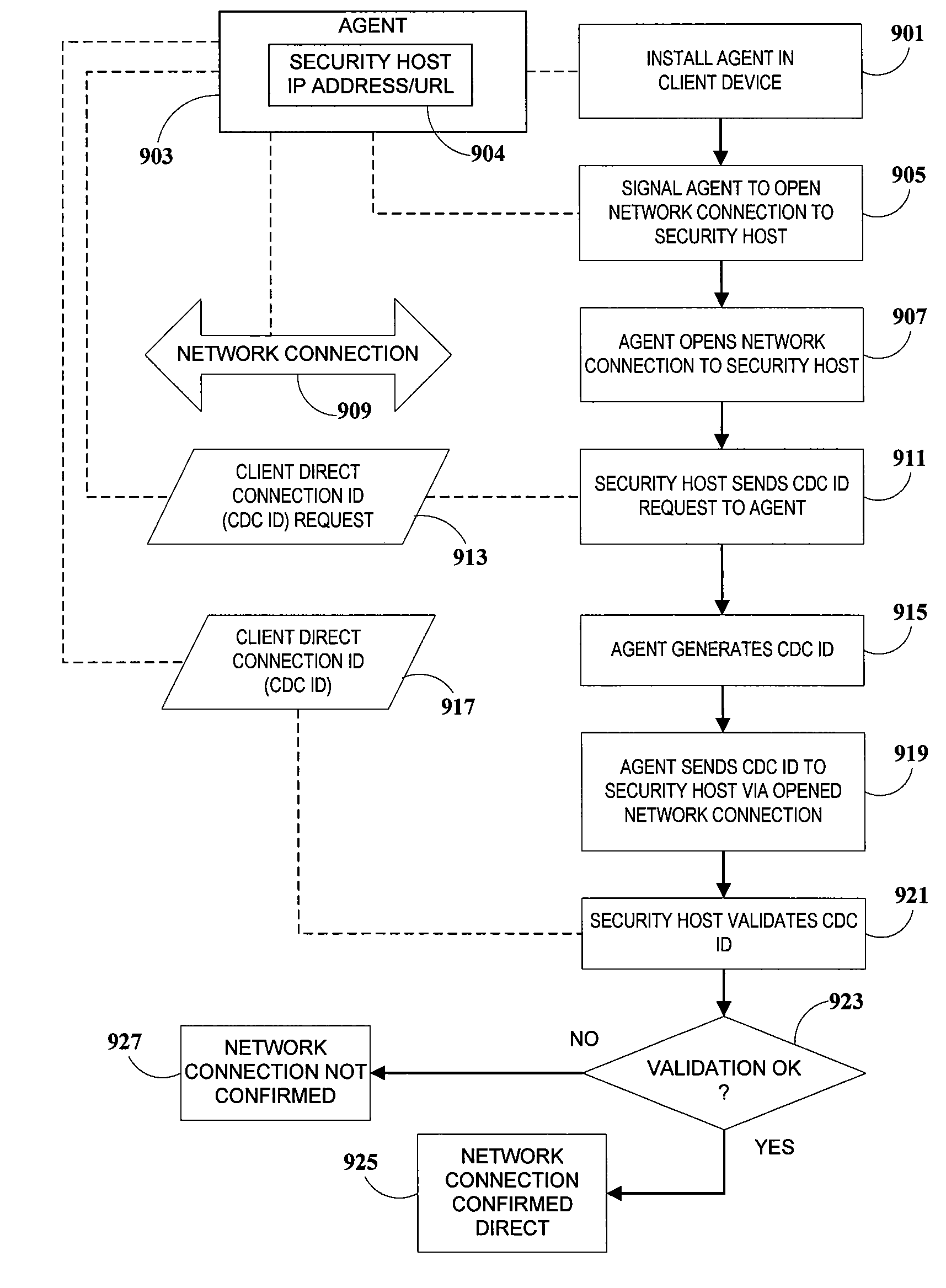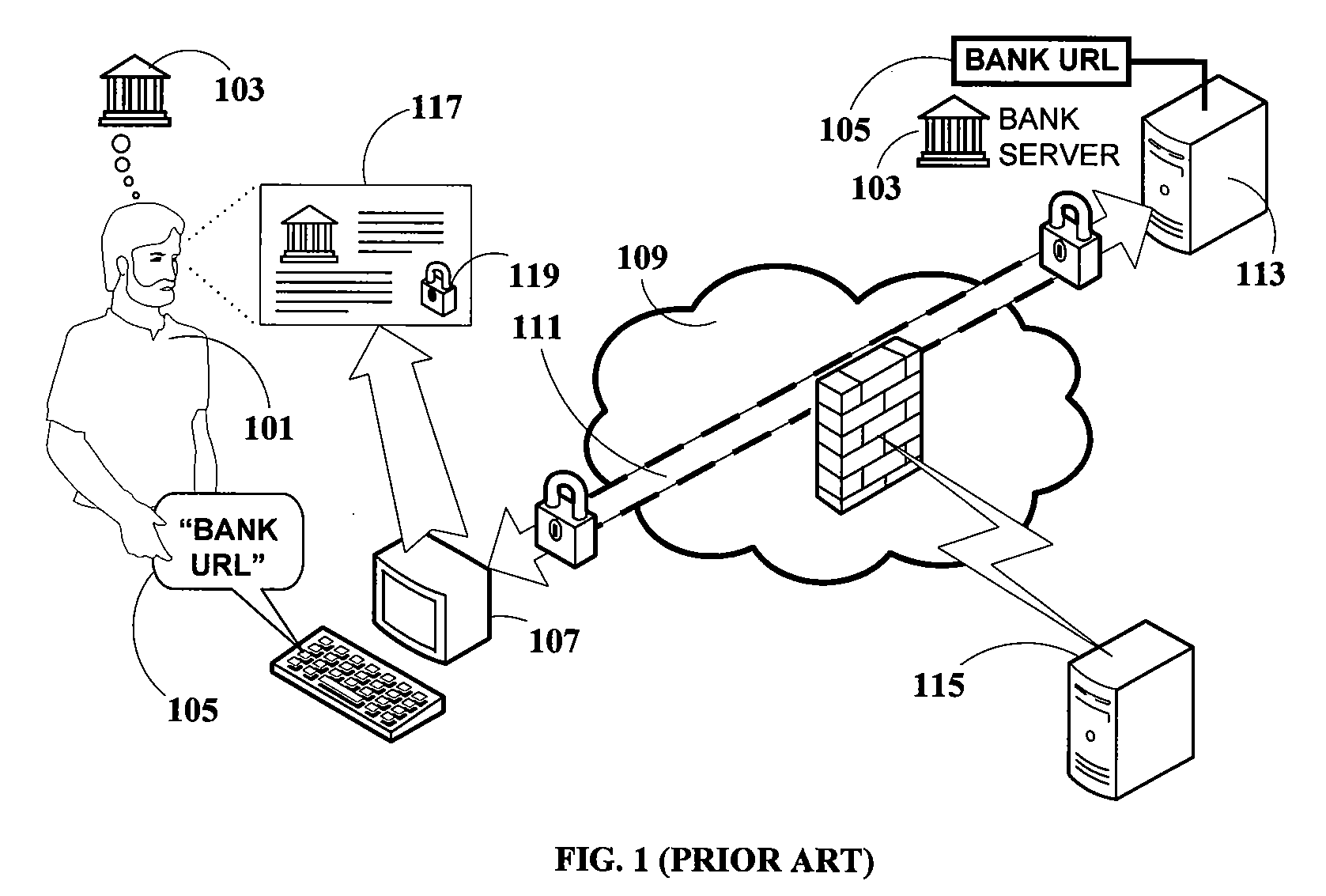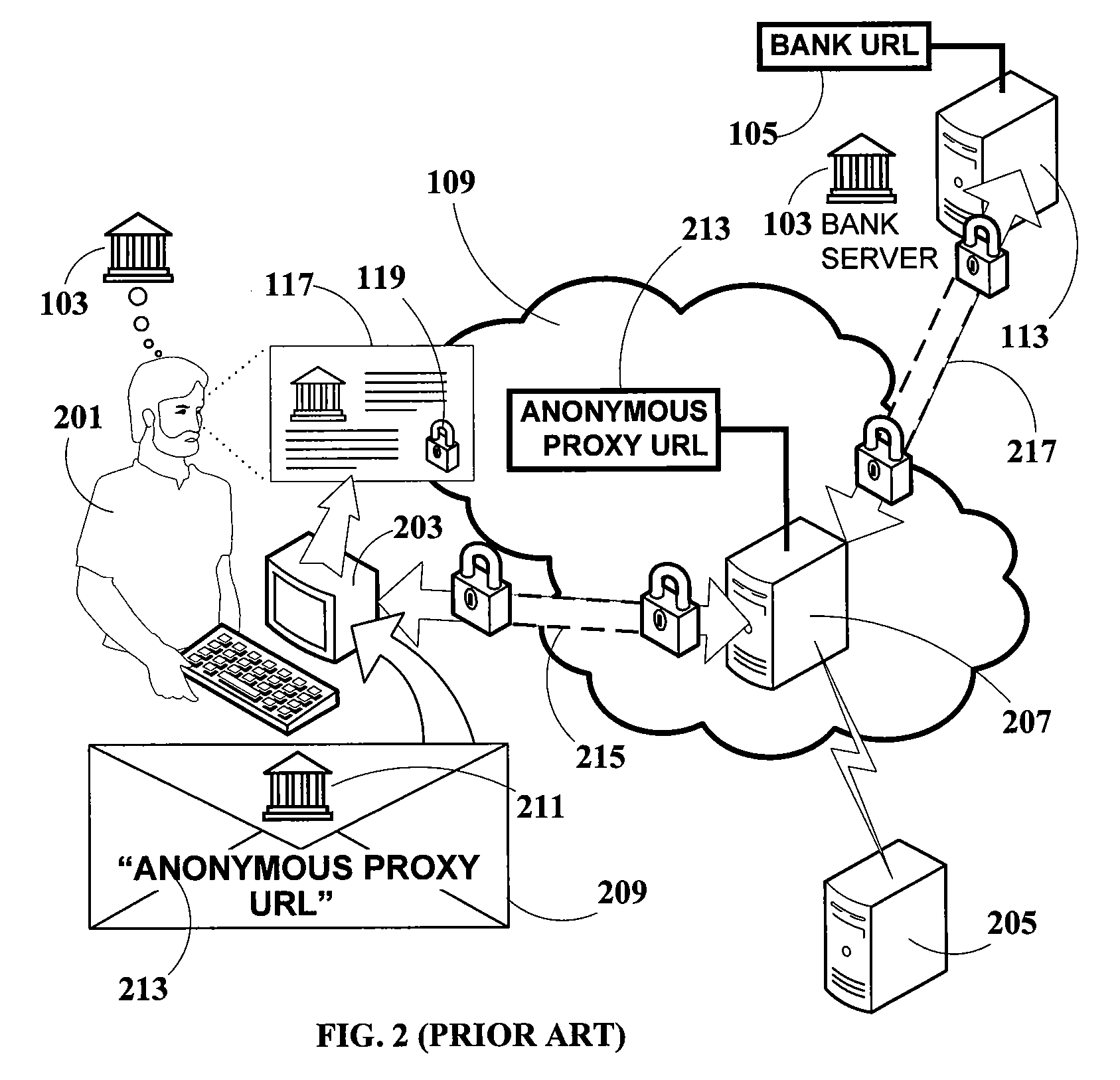Direct entry of a URL (via
typing), however, can be time-consuming and error-prone, and thus users typically prefer entering a URL by clicking on a link in a document or file.
Unfortunately, not all links can be trusted.
A link entered by a user and kept in a “favorites” or “bookmarks”
list, for example, is usually trustworthy, but the convenience and ease of disseminating links via the web and e-mail has created a situation where many links which superficially appear authentic are actually malicious.
A user is liable to employ a malicious link without realizing the consequences.
Many legitimate URLs are lengthy and complex, and contain references which are meaningless to a human user.
However, by virtue of the SSL data
encryption over a direct
network connection (as particularly defined hereinabove), none of the data is accessible to those other devices.
What unsuspecting user 201 does not realize, however, is that this is a “Man-in-the-Middle” attack, where the attacker is effectively between him and the
bank, and is capable of monitoring all data transactions between them.
The Man-in-the-Middle attack is a far more serious
threat because the attacker does not have to
forge or simulate the
bank website at all—the actual bank server itself provides the authentic website to the user.
For these reasons, the anonymous
proxy server Man-in-the-Middle attack is extremely dangerous.
This attack affects not only users, but also operators of sensitive websites.
Banks may thus be held legally liable for losses incurred by users who rely on such assurances and are then victimized by anonymous proxy phishing attacks, which
exploit faulty or inadequate bank security.
Current prior-art solutions for detecting and combating this attack are inadequate.
Even if such browsers become widespread, it can be expected that many users may still employ older browsers which lack this capability.In addition, although this solution may be effective against older phishing websites which are forgeries of legitimate websites (provided such phishing sites are maintained in the
database), it is readily seen that solutions depending on phishing site databases are ineffective against attacks utilizing anonymous proxies.
Not only are proxy locations too numerous to efficiently monitor, but they are highly fluid and constantly changing.
A
database of such sites, even if compiled, would always be out-of-date.
Certificate-checkingIt is well-known that the
certificate of bank server 113 (FIG. 1 and FIG. 2) cannot be forged by the attacker, and therefore the attacker cannot rigorously impersonate the bank.
By checking the
certificate presented by proxy server 207 against the
certificate information of bank server 113, it is easy to determine that computer 203 is not connected directly to bank server 113.Nevertheless, this check is impractical to perform in practice, because the user's browser typically has no information about the bank or the bank website that the user intends to access.
In fact, the browser does not have any way of knowing that the user intends to connect to bank 103.In addition, as previously noted, bank server 113 does not authenticate the client computer which opened the connection, not even in an SSL session, and it may not be advantageous to do so.
Such a solution is secure against Man-in-the-Middle attacks (such as anonymous proxy phishing), because the entire session is encrypted end-to-end regardless of how the connection is opened and regardless of whether the connection is an indirect
network connection, by virtue of the fact that both the bank server and the hardware token mutually authenticate themselves and open a secure session.The hardware token thus solves the problem of full
authentication while allowing the users full portability and mobility.Unfortunately, however, employing a hardware token involves considerably greater complexity than most service providers and users are willing to accept.
In addition to the (not inconsiderable) cost of the hardware token itself, there are the challenges of managing the issuing and maintenance of the hardware tokens on the part of the service provider, and the lifestyle adjustments the users have to make to carry it on their persons at all times. Furthermore, even though managing and carrying a single hardware token might be acceptable to many users, managing and carrying multiple hardware tokens from multiple service providers is a serious obstacle.
That is, the security breach itself is cause for taking action.
The need to collect device-specific data and return such data to the user computer places an additional burden on the communications.
Furthermore, device-specific data may not be relevant in cases where the user utilizes a different device for obtaining services over a network, such as when traveling.
Additional overhead imposed by this step includes the
encryption and decryption of the client
IP address information.
This shortcoming further causes inconvenience and concern to the user and undermines user faith in the safety of on-line transactions.
 Login to View More
Login to View More  Login to View More
Login to View More 


